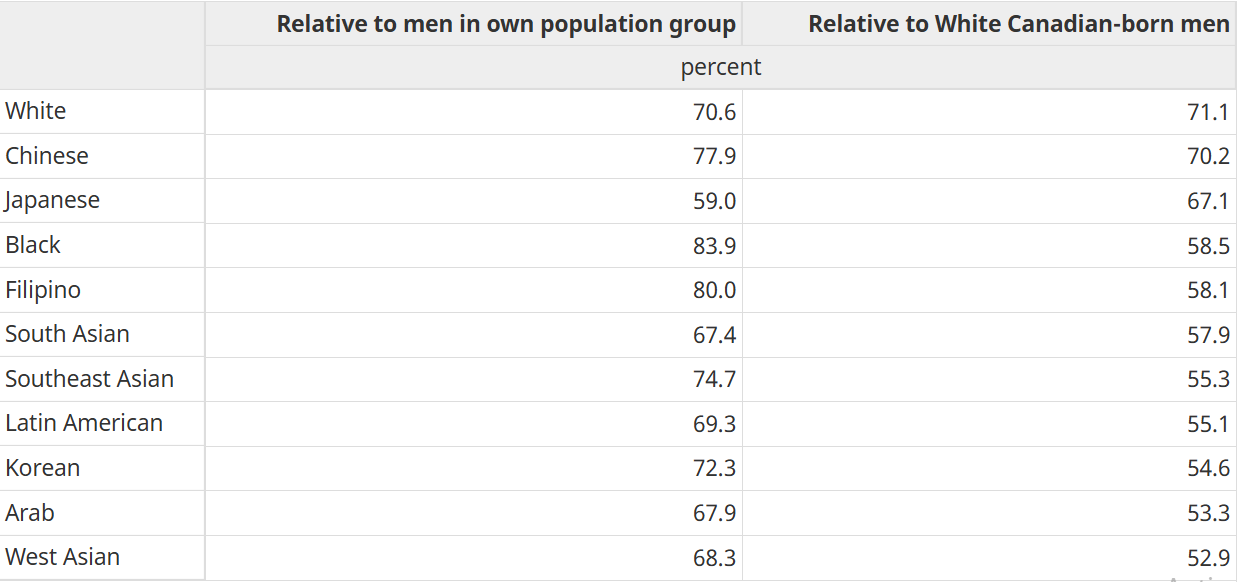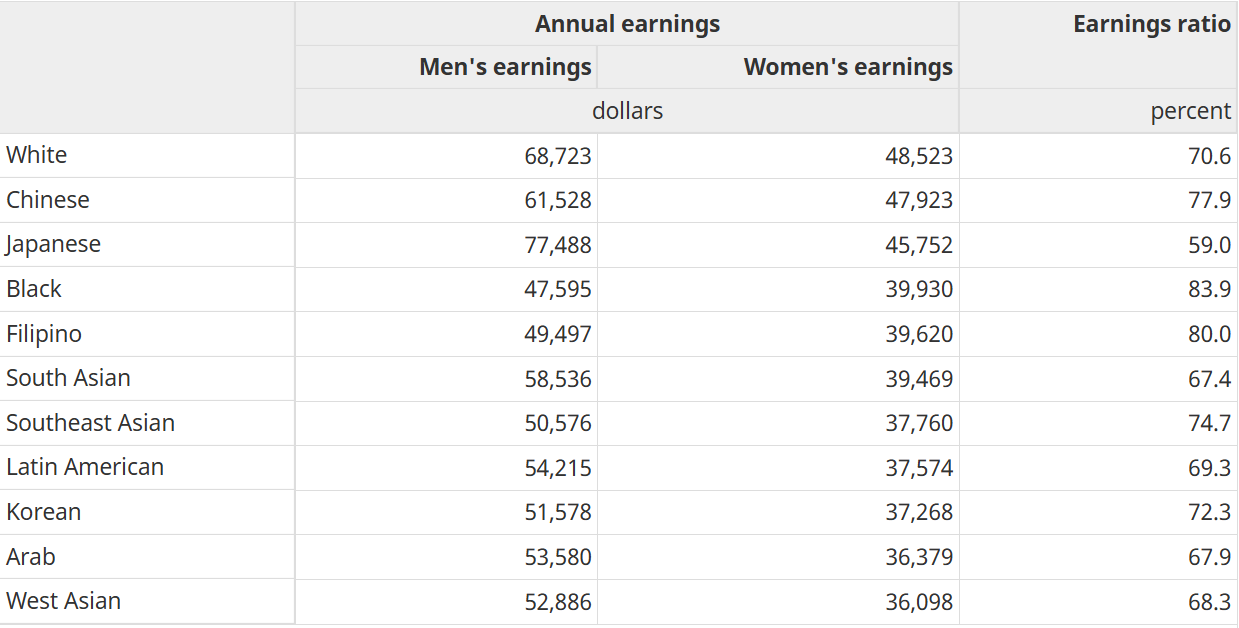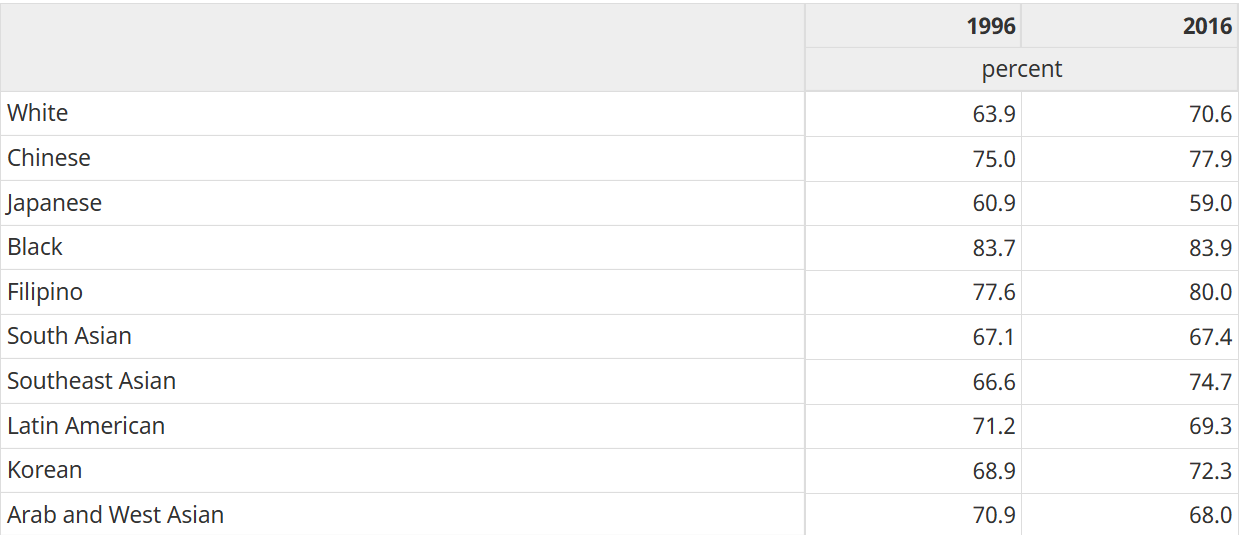
Latest StatCan report looks at earnings of men, women across different populations

While the gender pay gap persists, some women in different parts of Canada’s population are experiencing it worse than others, according to a report from Statistics Canada.
Compared with the annual mean earnings of white Canadian-born men, white women earned an average of $0.71 for every $1.00 earned by white men in 2016.
Chinese and Japanese women were not far behind, at $0.70 and $0.67, respectively.
However, relative earnings dropped below 60% for other groups, with Black, Filipino and South Asian women earning an average of 58% to 59% of the earnings of white Canadian-born men. Southeast Asian, Latin American and Korean women earned about 55%, while Arab and West Asian women earned an average of about 53%.

Women across the population also earn less than men in their own nationality.

“The discrepancy between the two gender earnings ratios shown in Chart 1 arises from the fact that the ranking of population groups by average earnings is different among men than it is among women,” says StatCan.
StatCan attributed much of the gender earnings gap to differences in weekly hours worked and sector of employment.
“Average weekly hours worked were lower among women than men in all population groups, whether because of a higher incidence of part-time employment among women or because of fewer hours of overtime worked, which in turn could lead to less overtime pay,” says StatCan.
For example, women were more likely to work in the health care and social assistance sector than men, particularly among Black and Filipino women.
Meanwhile, lower proportions of women than men worked in the manufacturing sector overall, but a large gender gap was observed in two groups: 17.5% of Southeast Asian women worked in the sector, compared with 31.4% of Southeast Asian men, and 8.3% of Filipino women worked in the sector, compared with 25.8% of Filipino men.
It will take more than 100 years before the world sees full gender parity, according to a previous report from the Women’s Executive Network (WXN).
Despite the difference, there has been some progress towards gender equality since 1996, according to StatCan.
“The ratio of women’s mean annual earnings to those of men among workers aged 25 to 64 has increased from 1996 to 2016, moving from 64.7% to 71.0% overall,” says StatCan.
However, these relative gains were not distributed evenly across population groups, with some groups’ wages dropping relative to earnings of White men and men in their own nationality.

The slow walk to reaching gender wage equality took steps in the wrong direction in the technology industry in the past years, according to a recent report. Overall, the gender pay gap in Canada’s tech workforce has almost tripled since 2016, report researchers from The Dais at the Toronto Metropolitan University.